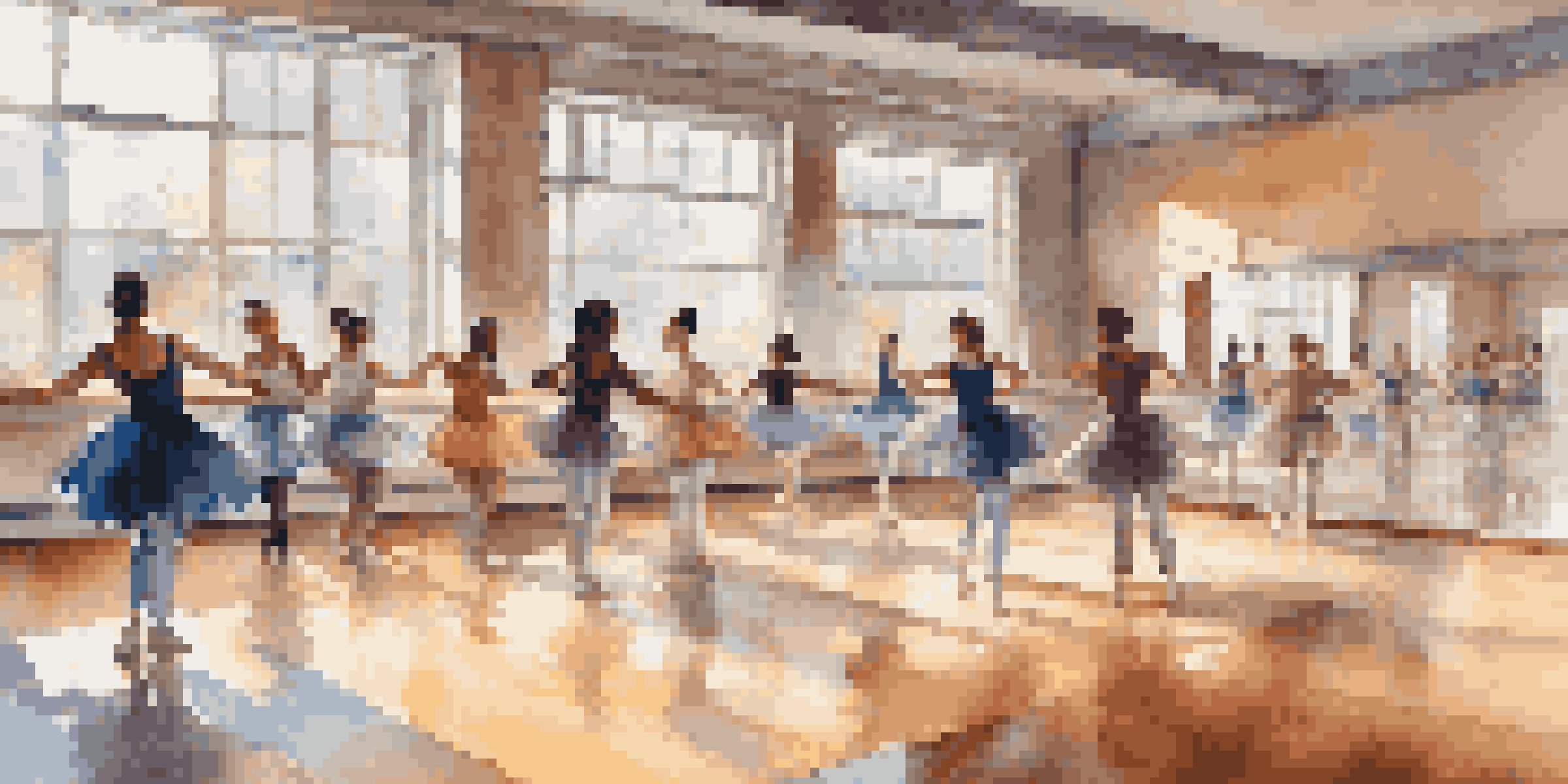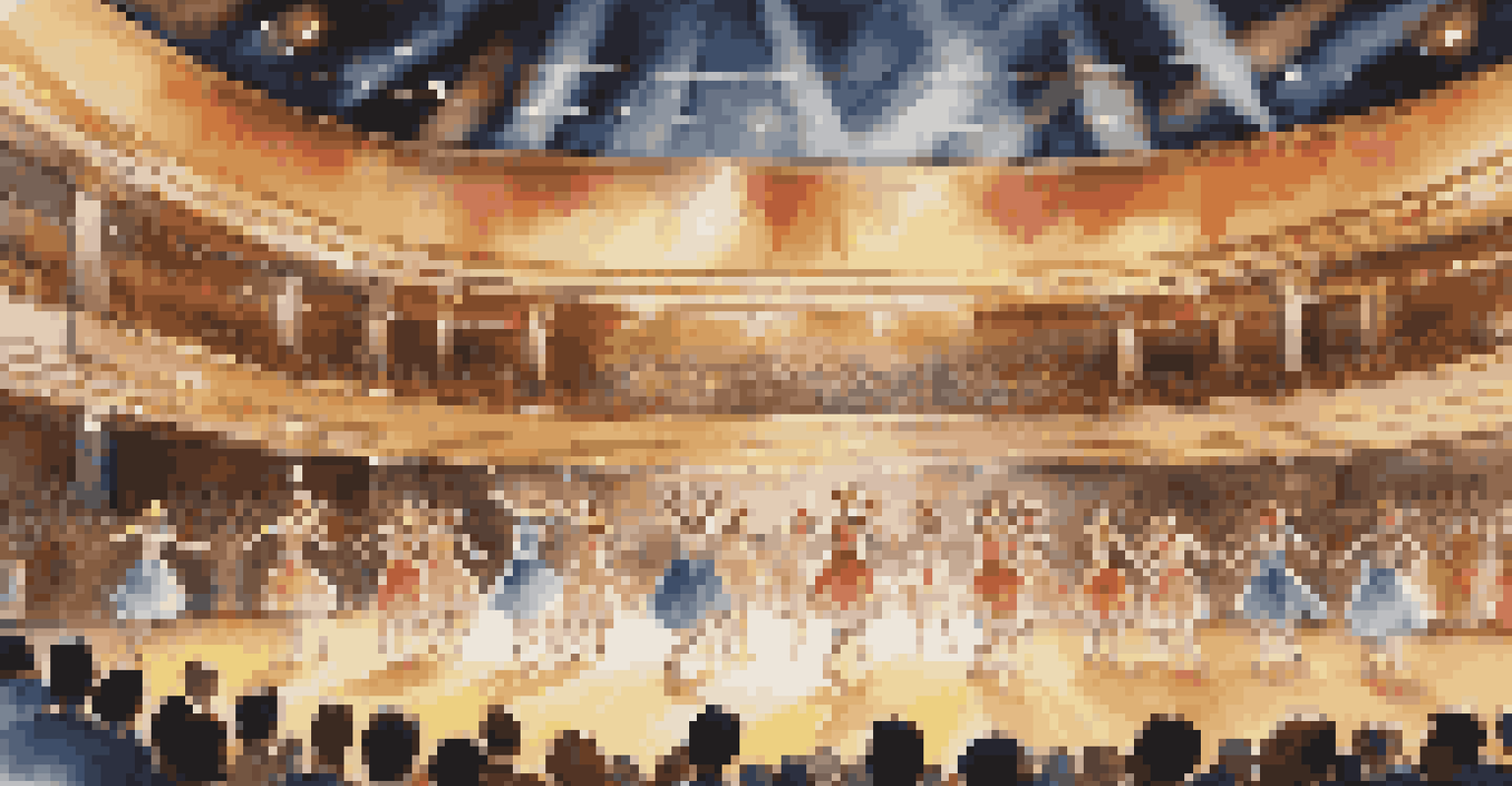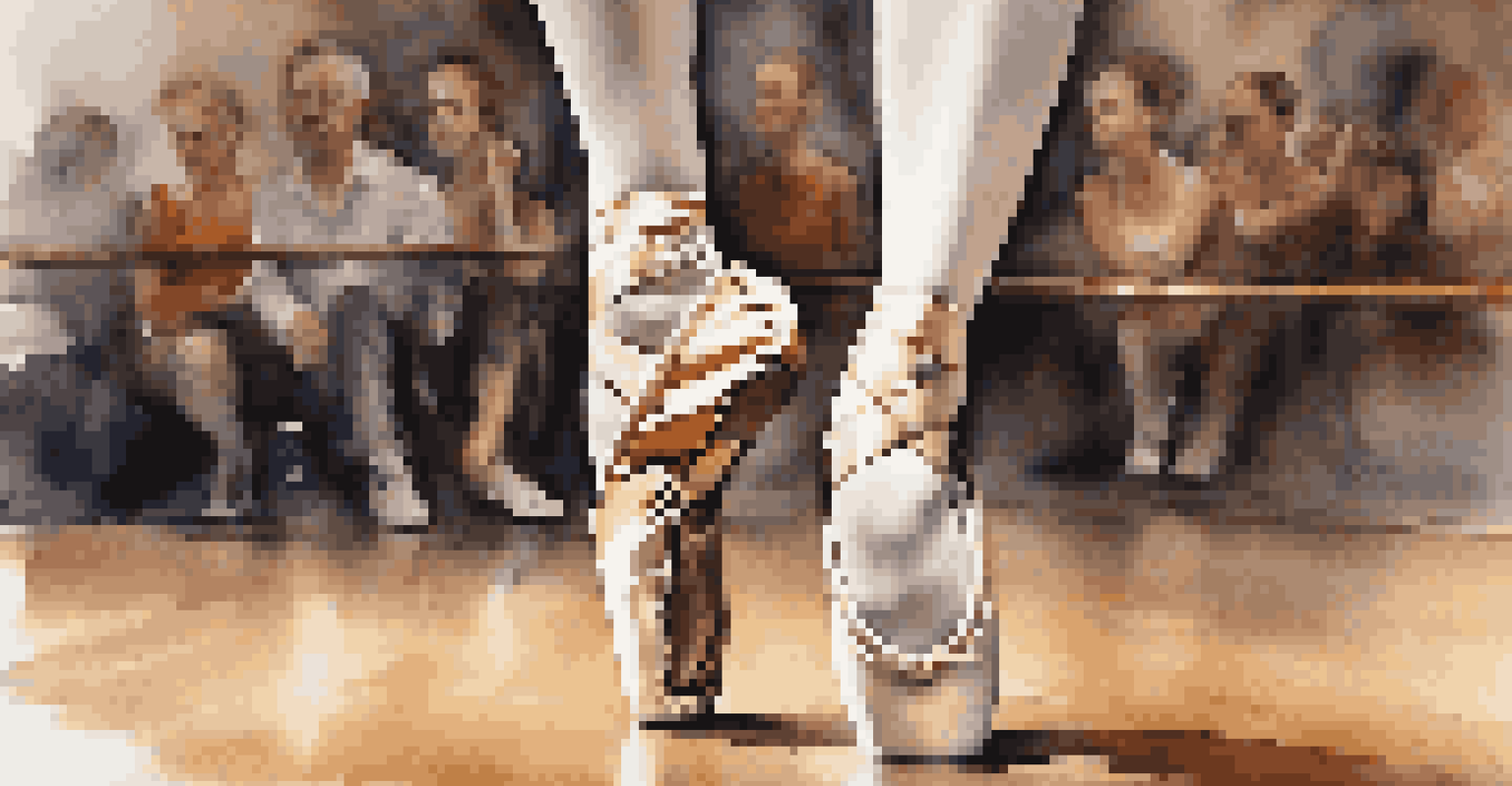The Influence of Dance Competitions on Dance Education Trends

The Rise of Dance Competitions in Education
Dance competitions have surged in popularity over the past two decades, becoming a staple in many dance schools. These events not only showcase talent but also serve as a significant influence on curriculum development. With studios aiming to prepare dancers for these competitions, educators are adapting their teaching methods to meet the demands of performance excellence.
Dance is the hidden language of the soul.
As competitions become more accessible, students are increasingly drawn to them, which in turn encourages schools to implement more rigorous training programs. This trend reflects a shift towards a more performance-oriented approach in dance education. The desire to excel in competitions pushes instructors to refine their techniques and choreography to remain competitive.
Moreover, competitions often highlight contemporary styles and innovative choreography, impacting what is taught in dance classes. This creates an evolving educational environment that stays current with dance trends. As a result, students gain exposure to a broader range of dance forms, enriching their overall education.
The Role of Judges and Feedback in Dance Education
Judges at dance competitions provide critical feedback that can greatly influence a dancer’s growth. Their evaluations offer insights not just on performance but also on technique and artistic expression. This feedback loop encourages dancers and educators to focus on areas that need improvement, fostering a culture of continuous learning.

In this sense, competition serves as a catalyst for personal and artistic development. Dancers learn to accept constructive criticism, which is an essential life skill. The pressure of performing in front of judges also cultivates resilience, helping students to manage anxiety and enhance their stage presence.
Competitions Shape Dance Education
Dance competitions have influenced curriculum development by pushing educators to adapt teaching methods to enhance performance excellence.
Furthermore, the feedback received at competitions can lead to changes in teaching methodologies. Educators may incorporate more targeted training sessions based on common critique themes, ensuring that students are equipped with the skills necessary to succeed. This responsiveness to feedback creates a dynamic learning environment where adaptability is key.
Emphasis on Technique and Precision in Training
One of the most significant impacts of dance competitions is the heightened emphasis on technique and precision. Competitions often reward dancers who demonstrate flawless execution and mastery of technique, pushing studios to prioritize these elements in their curriculums. As a result, students are encouraged to refine their skills beyond mere performance.
To dance is to be out of yourself. Larger, more beautiful, more powerful. You are not just in the body; you are the body.
Instructors may introduce more rigorous training regimens that focus on building strength, flexibility, and control. This increased focus on technique not only prepares students for competitions but also enhances their overall dance ability. Dancers who master these foundational skills often find themselves better equipped for various styles and performance settings.
Moreover, the competitive environment fosters a sense of discipline and commitment that is vital for any dancer. As students strive for perfection, they develop a strong work ethic that extends beyond the dance studio. This dedication can lead to improved performance in both competitions and everyday practice.
Diversity in Dance Styles Inspired by Competitions
Dance competitions have become a platform for showcasing a wide range of styles, from ballet to hip-hop. This diversity encourages dance educators to expand their offerings, allowing students to explore different genres. As dancers experiment with various styles, they develop a more versatile skill set that enhances their overall artistry.
The influence of competitions also leads to the incorporation of fusion styles, where traditional techniques are blended with contemporary elements. This creative exploration not only keeps students engaged but also reflects current trends in the dance world. Educators are now more inclined to embrace innovation, which can spark a passion for dance in students.
Feedback Fuels Dancer Growth
Judges provide critical feedback that encourages continuous learning and helps dancers improve their technique and artistic expression.
As a result, students are better prepared for a variety of performance opportunities, whether in competitions or professional environments. This adaptability can lead to a richer dance experience, as students learn to appreciate the intricacies of different styles. The focus on diversity ultimately enriches the educational landscape.
The Impact of Technology on Dance Education and Competitions
The integration of technology in dance competitions has transformed how performances are judged and critiqued. Video recordings and online streaming allow dancers to analyze their performances and receive feedback from judges. This technological advancement creates a unique learning opportunity for students to reflect on their progress.
Additionally, social media has become a powerful tool for dancers to showcase their talents and gain exposure. Competitions often use platforms like Instagram and TikTok to promote their events and participants. This trend encourages dancers to build their personal brands, motivating them to refine their skills and present their best selves.
Moreover, technology facilitates remote learning and virtual competitions, expanding access to dance education. Students who may not have the opportunity to participate in traditional competitions can now engage with their peers and showcase their talents online. This shift opens doors for collaboration and innovation, benefiting the entire dance community.
Building Community Through Dance Competitions
Dance competitions foster a sense of community among dancers, instructors, and families. These events bring together diverse groups who share a passion for dance, creating a supportive environment. This communal spirit is vital for nurturing friendships and mentorships that can last a lifetime.
As dancers compete, they also learn the value of sportsmanship and collaboration. Sharing experiences, both wins and losses, helps build character and resilience. The relationships formed during competitions often lead to networking opportunities that can assist dancers in their future careers.
Diversity in Dance Styles Emerges
Competitions promote a wide range of dance styles, inspiring students to explore different genres and enhancing their overall artistry.
Moreover, competitions encourage studios to engage with one another, sharing resources and knowledge. This collaborative approach can lead to the development of workshops and masterclasses that benefit the broader dance community. Ultimately, the sense of belonging cultivated through competitions enhances the educational experience.
Future Trends in Dance Education Influenced by Competitions
As dance competitions continue to evolve, they will undoubtedly shape future trends in dance education. Emerging styles and techniques showcased at competitions will influence educators' curriculums, ensuring that students remain relevant in the dance world. This adaptability is crucial in an industry that thrives on innovation.
Furthermore, as competitions embrace inclusivity and diversity, there's a growing trend towards representing various backgrounds and abilities. Dance education will need to reflect these values, fostering an environment where all dancers feel welcomed and supported. This shift will lead to a richer educational experience for everyone involved.

In summary, the influence of dance competitions on education trends is profound and multifaceted. As the landscape continues to change, students, educators, and the dance community will adapt, ensuring that the art of dance remains vibrant and accessible for future generations.